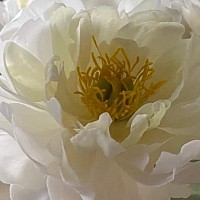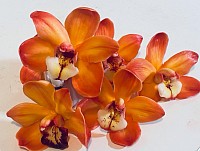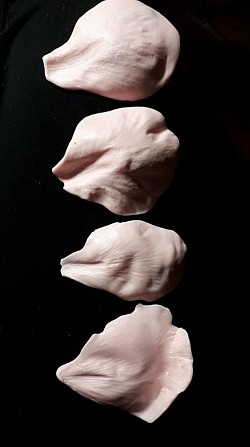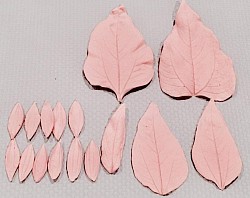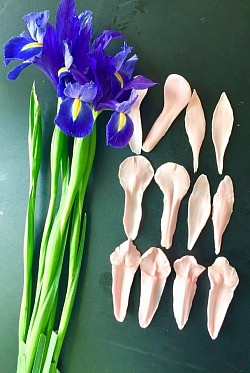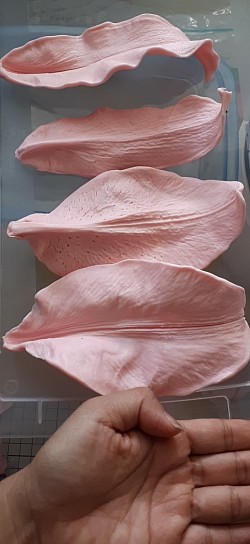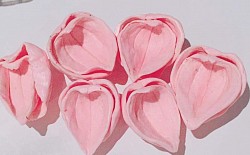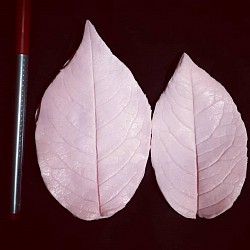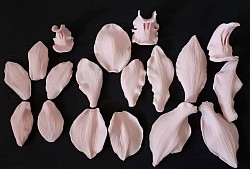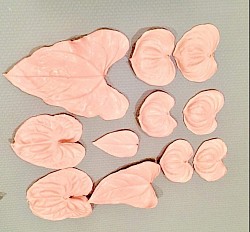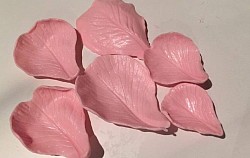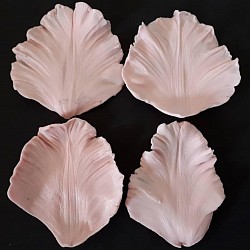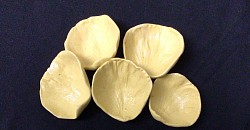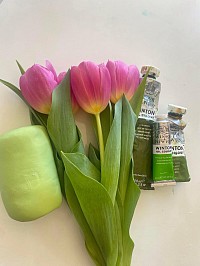Silicone Veiner, Floral Clay molds ,Floral sculpture tools,Floral sculpture polymer clay, Storage equipment
Tools: Rolling Pin, Scissors, Ball Tool.
The most essential tools are those made from metal or stainless steel. Using plastic tools can cause the clay to stick and become messy, making the process difficult. A recommended technique is to let the clay rest for 1-2 minutes before shaping it according to the specific flower type. Additionally, applying baby oil to the mold can help prevent sticking.
Templates from nature for realistic sculpting—A Business Approach.
Creating Sculptures: Choosing Seasonal Flower Templates
1. Select various flower types at different stages of maturity to enhance depth and realism in your work.
2. Choose the color of the flowers to examine the patterns of your sculpture. Each flower species has a distinct structural integrity that varies with color shades, so focus on the skeletal structure and prominent patterns on the petals and leaves.
3. When making templates, allow the surfaces of multiple flower types to dehydrate, which will help define the templates more clearly. Some smooth surfaces may not permit detailed patterns, and this drying process can take 2-3 days, depending on the thickness and moisture retention of the specific plants and flowers.
Sculpture tutorial clay flower, Step by Step,Guide how to make clay flower,Tips and Tricks,Hints,Easy Tricks for Beginners
Welcome to the enchanting realm of Cold Porcelain craft! This air-dry marvel is your ticket to creating everlasting floral wonders. Despite its name, Cold Porcelain boasts a surprising flexibility when dry. While not edible, its non-toxic nature means your sugar craft tools can double for clay creations. Just a quick wash in between, and you're good to go!Working with Cold Porcelain is akin to sugar paste, offering the ability to roll out super thin layers, wire support for structure, and the versatility to be colour with food gels, dusts, or even oil paints. Plus, making your own batch is a breeze.For beginners eager to dive in, fret not. Even the most intricate flowers are within your reach with a bit of grit. Let’s strip away the complexity and equip you with the nifty tips and tricks for kickstarting your clay flower crafting journey—simple, satisfying, and suited for the starter. Stay tuned for concise, clear-cut guidance to blossom your skills!
Food grade silicone veiner
In the world of clay flower crafting, silicone veiner are the secret to achieving lifelike petals and leaves. These food-grade tools are essential for any artist looking to create professional, detailed botanical sculptures. They work by imprinting natural textures onto your clay, mimicking the delicate veins of real flowers. Simply press your clay between the veiner molds to emboss the intricate patterns. Whether you’re fashioning roses, lilies, or any flora of your fancy, silicone veiners help you add that touch of realism and sophistication to your work. Safe, durable, and easy to clean, they’re a must-have for crafting stunning, durable floral displays that endure.
Tools for implementation and guidelines for project creation.
Working with clay is a delicate and intricate process, as the characteristics of flowers vary significantly in terms of complexity and genetic traits. Creators must adhere to natural principles as a guide in their work, including color differentiation and nature imitation. The techniques become even more complex when dealing with larger pieces.
For simpler projects, our page offers templates for shaping, color matching, and the use of non-toxic clay that is safe for artisans. This environmentally friendly material can also be used in conjunction with sugar crafting and chocolate modeling.
